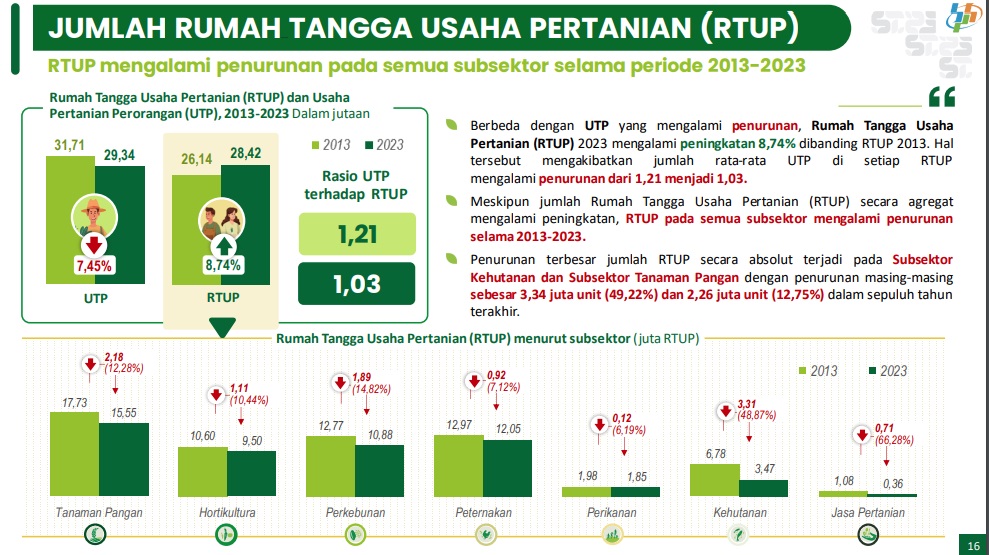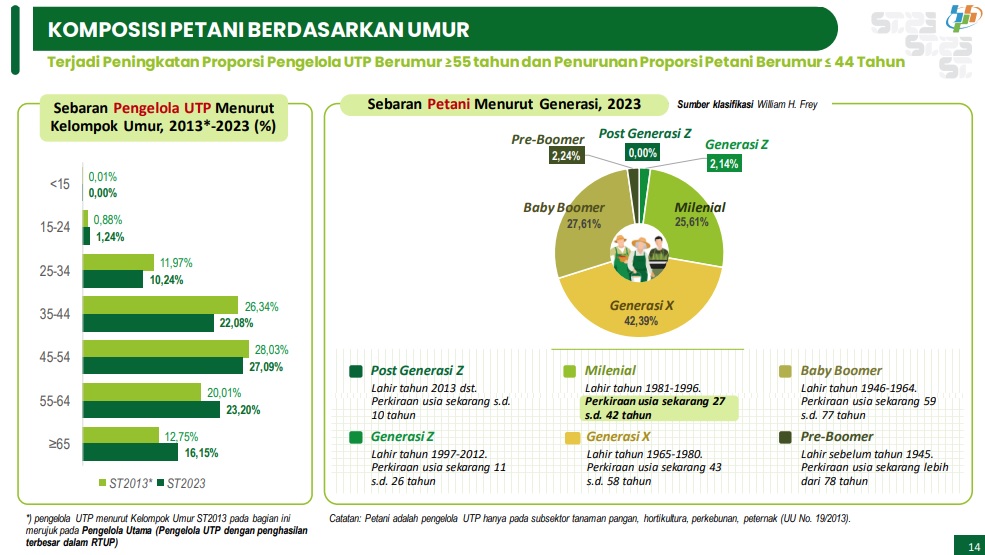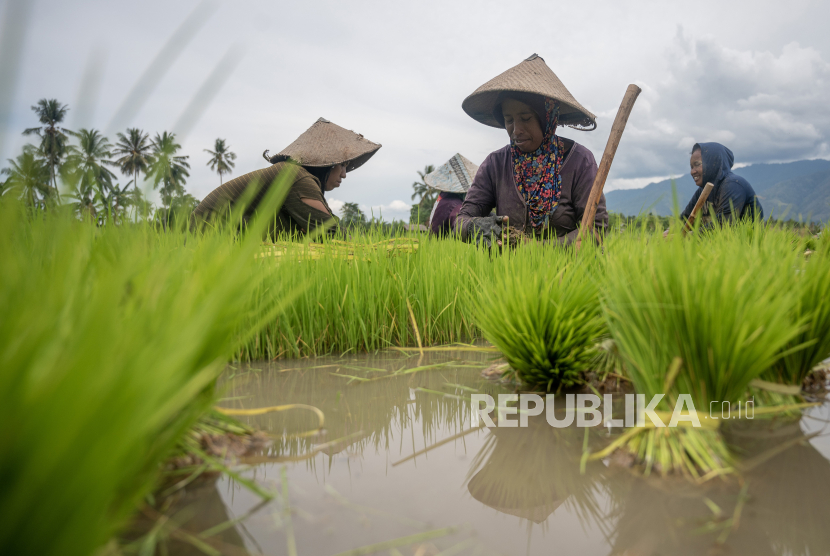JAKARTA -- The Central Statistical Agency (BPS) notes that the number of Indonesian farmers has continued to decline since 2013. Currently, the number of farmers in Indonesia is 29.3 million farmers, down from 31 million farmers in 2013. Farmers in the Homeland are also predominantly aged farmers.
BPS President Secretary Atqo Mardiyanto said that although the number of Individual Agricultural Enterprises (UTP) decreased, but for agricultural enterprises households (RTUP) increased by 8.74 percent. Currently, there are 28.4 million RTUPs in Indonesia.
“The number of legally incorporated agricultural enterprises has also increased by 35 percent since 2013. Currently, it is recorded that there are 5,705 agricultural enterprises with legal entities,” Atqo said when presenting the results of the 2023 Agricultural Census Phase 1 in Jakarta on Monday (4/12/2023).
The largest number of Individual Agricultural Business Units is in East Java province with 5.6 million farmers. Whereas in DKI Jakarta there are currently only 13 thousand farmers.
The decline in the number of farmers is also accompanied by a decrease in agricultural productivity in Indonesia. In 2022, agricultural productivity did not reach Rp 40 million per farmer in one year.
This is also due to the lack of desire of people working in the agricultural sector. Informal labour figures are more numerous in the agricultural sector at up to 88 per cent.
As of February 2023, the amount of absorbed labor in the agricultural sector was only 29.36 percent of the new labor force in the 2022-2023 timeframe. BPS in its sense includes new variables, one of which records the number of young farmers, millennial farmers in Indonesia.
Atqo said that BPS noted that this year there were 6.18 million young farmers in the 19-39 age range. These young farmers touch 21.93 percent of the number of farmers in Indonesia. “There are currently 6.18 million millennial farmers in Indonesia,” Atqo said.
Not only the millineal group, in Generation Z it also turns out that some are already farmers. That's 2.14 percent of the total farmers in Indonesia. These Gen-Z farmers are among the 11- to 26-year age range.

This is also in line with the rise of urban farming. The majority of millennial farmers develop urban farming in Indonesia. This modern farm reaches 13 thousand units in Indonesia.
Urban farming is growing in West Java with 3,231 urban farming units. This amounts to 24.82 percent of total urban farming in Indonesia. Urban farming focuses heavily on the development of food crops and plantations.
The BPS also noted that one of the causes of the decline in Indonesian agricultural productivity from year to year is the low educational background of Indonesian farmers. These conditions hamper innovation and efforts to accelerate agricultural technology.
Acting Head of the Central Statistical Agency Amalia Adininggar explained that the education level of almost 75 percent of the agricultural workforce is the highest primary school.

Meanwhile, farmers who are able to complete education up to a bachelor's degree are only 700,000 people or only 1.82 percent of the number of farmers in Indonesia. “Data from February 2023 shows that most of the agricultural workforce is only finishing their education in primary school,” Amalia said.
In addition, the number of farmers today is still dominated by older groups. The current age of farmers is in the majority at the age of 40-60 years. “Farm workers tend to age and this is a concern of ours together to drive workforce regeneration in the agricultural sector,” Amalia said.
This is a major challenge affecting the wages of today's agricultural labourers. The real wage of farm labourers is currently only IDR 51,453. “The wages of agricultural labourers are also likely to weaken. Nominal wages increased, but could not describe the level of peasant welfare. These real wages tend to decrease,” Amalia said.
This makes the welfare level of farmers even worse. The BPS noted that Indonesia's poverty, especially in rural areas, stands at 12.22 percent. “By and large, the countryside is dominated in its economy by the agricultural sector,” Amalia said.
He exemplified that, in North Nias, 52.95 percent of Nias GDP depends on the agricultural sector. However, currently its poverty rate stands at 21.79 percent.
“The poverty rate is still high precisely in regions whose economy is supported by the agricultural sector,” Amalia said.


